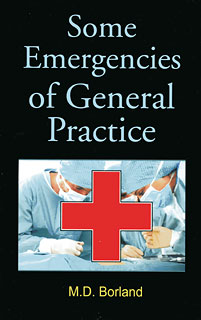‘Homeopathy Is Nanomedicine’- A Dangerous Claim Originating From Ignorance
Some homeopaths try to appear ‘scientific’, by claiming homeopathy is nanomedicie. They should understand, homeopathy will not become more scientific, merely by sprinkling some terms like ‘nano’. Same time, when saying homeopathy is nanomedicine, one is bound to explain how potentized drugs become ‘nano’ drugs even in dilutions much above avogadro lmit, and molecular mechanism of how that nanoparticles act as therapeutic agents according to similia similibus curentur. We should remember, all homeopathic medicines are not prepared from simple “metallic elements”, but complex drugs of vegetable, mineral and animal origin containing highly complex molecules, not only ‘metalic elements”. We will have to explain how “nano-particles” of ‘metal elements’ contained in these complex drug molecules mimic the highly complex molecular level properties of those very large molecules.
“In its scientific meaning, Nanomedicine is the medical application of nanotechnology. Nanomedicine ranges from the medical applications of nanomaterials, to nanoelectronic biosensors, and even possible future applications of molecular nanotechnology. Current problems for nanomedicine involve understanding the issues related to toxicity and environmental impact of nanoscale materials. One nanometer is one-millionth of a millimeter.”
When we claim homeopathy is nanomedicine, we are actually putting homeopathy under a great risk. Nanoparticles are a subject of much concern for scientific community, since it raises serious questions of nanotoxicity. If we say our drugs contain nanoparticles, it would be easy for our antagonists to attack us from the angle of nanotoxicity. If homeopathy is admitted to be nanomedicine, we can no longer claim it is ‘safe medicine’. In such a context, our drugs will have to be subjected to rigorous nanotoxicity studies and licensing system.
Let me quote from Wikipedia on Nanotoxicity:
“Nanomaterials, even when made of inert elements like gold, become highly active at nanometer dimensions. Nanotoxicological studies are intended to determine whether and to what extent these properties may pose a threat to the environment and to human beings. For instance, Diesel nanoparticles have been found to damage the cardiovascular system in a mouse model.
Calls for tighter regulation of nanotechnology have arisen alongside a growing debate related to the human health and safety risks associated with nanotechnology.
Calls for tighter regulation of nanotechnology have arisen alongside a growing debate related to the human health and safety risks associated with nanotechnology.
The smaller a particle is, the greater its surface area to volume ratio and the higher its chemical reactivity and biological activity. The greater chemical reactivity of nanomaterials results in increased production of reactive oxygen species (ROS), including free radicals. ROS production has been found in a diverse range of nanomaterials including carbon fullerenes, carbon nanotubes and nanoparticle metal oxides. ROS and free radical production is one of the primary mechanisms of nanoparticle toxicity; it may result in oxidative stress, inflammation, and consequent damage to proteins, membranes and DNA
The extremely small size of nanomaterials also means that they much more readily gain entry into the human body than largersized particles. How these nanoparticles behave inside the body is still a major question that needs to be resolved. The behavior of nanoparticles is a function of their size, shape and surface reactivity with the surrounding tissue. In principle, a large number of particles could overload the body’s phagocytes, cells that ingest and destroy foreign matter, thereby triggering stress reactions that lead to inflammation and weaken the body’s defense against other pathogens. In addition to questions about what happens if non-degradable or slowly degradable nanoparticles accumulate in bodily organs, another concern is their potential interaction or interference with biological processes inside the body. Because of their large surface area, nanoparticles will, on exposure to tissue and fluids, immediately adsorb onto their surface some of the macromolecules they encounter. This may, for instance, affect the regulatory mechanisms of enzymes and other proteins.
Nanomaterials are able to cross biological membranes and access cells, tissues and organs that larger-sized particles normally cannot. Nanomaterials can gain access to the blood stream via inhalation or ingestion. At least some nanomaterials can penetrate the skin; even larger microparticles may penetrate skin when it is flexed. Broken skin is an ineffective particle barrier, suggesting that acne, eczema, shaving wounds or severe sunburn may accelerate skin uptake of nanomaterials. Then, once in the blood stream, nanomaterials can be transported around the body and be taken up by organs and tissues, including the brain, heart, liver, kidneys, spleen,bone marrow and nervous system. Nanomaterials have proved toxic to human tissueand cell cultures, resulting in increased oxidative stress, inflammatory cytokine production and cell death. Unlike larger particles, nanomaterials maybe taken up by cell mitochondria and the cell nucleus. Studies demonstrate the potential for nanomaterials to cause DNA mutation and induce major structural damage to mitochondria, even resulting in cell death. Size is therefore a key factor in determining the potential toxicity of a particle. However it is not the only important factor.”
If we accept ‘nanoparticles’ as the active principles of potentized homeopathicmedicines, ongoing nanotoxicology studies will have to be made applicable to homeopathic medicines also.
If the present apprehensions in the scientificworld regarding nanotoxicity finally turns out into a strict legislative processes globally, and homeopathic medicines are included in the group of ’nanoparticle’ materials, homeopathy will have a very tough time to come.
My request homeopaths to refrain from creating unnecessary problems for homeopathy by claiming it is nanomedicine, even if due to ignoance regarding what the word actually implies.






Post a Comment
EmoticonClick to see the code!
To insert emoticon you must added at least one space before the code.